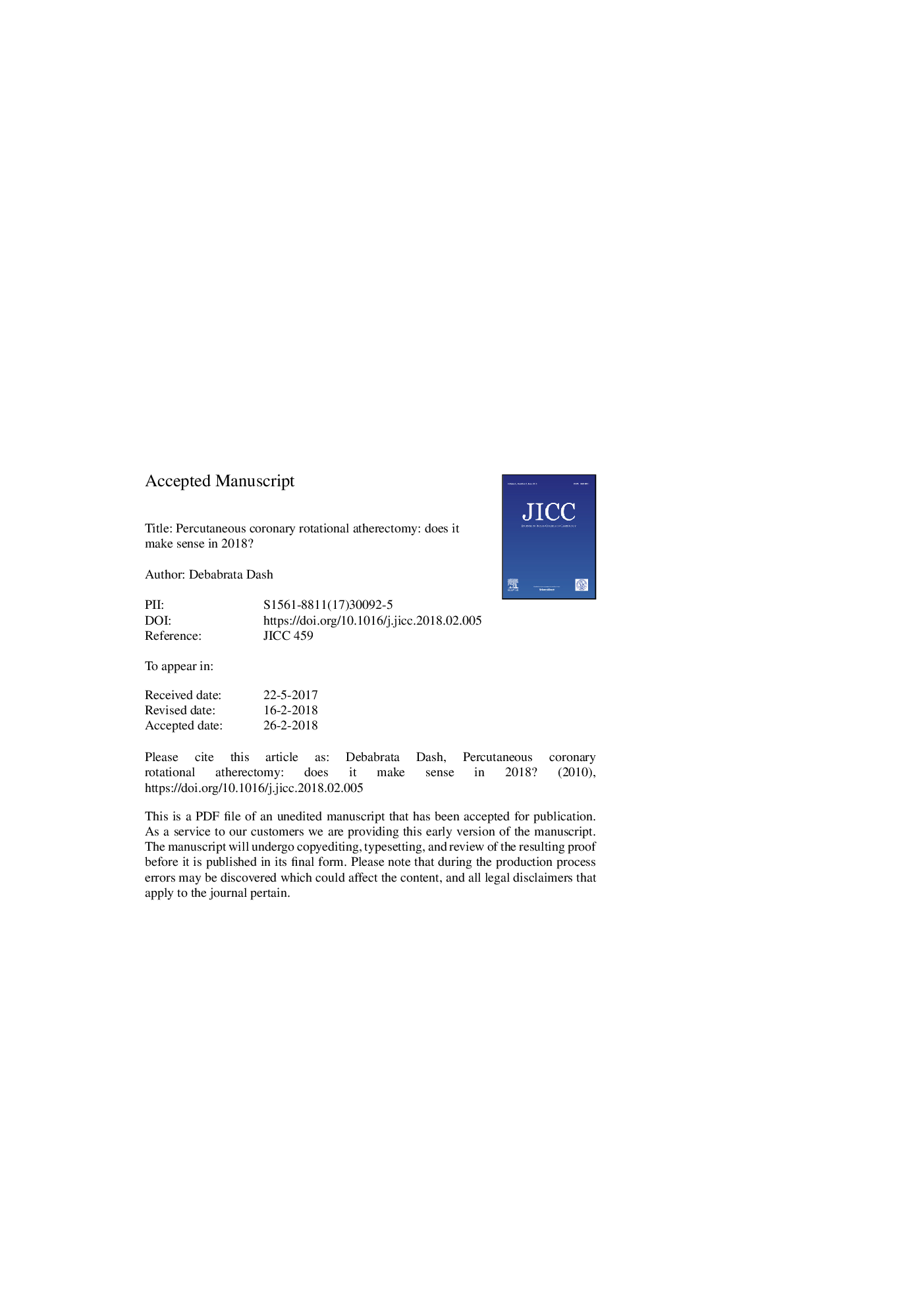| کد مقاله | کد نشریه | سال انتشار | مقاله انگلیسی | نسخه تمام متن |
|---|---|---|---|---|
| 8669702 | 1578448 | 2018 | 22 صفحه PDF | دانلود رایگان |
عنوان انگلیسی مقاله ISI
Percutaneous coronary rotational atherectomy: Does it make sense in 2018?
ترجمه فارسی عنوان
آتروکتومی چرخشی عروق کرونر: آیا در سال 2018 حساس است؟
دانلود مقاله + سفارش ترجمه
دانلود مقاله ISI انگلیسی
رایگان برای ایرانیان
کلمات کلیدی
مداخله عروق کرونر آتروکتومی چرخشی، استنت ساییدگی مواد مخدر،
موضوعات مرتبط
علوم پزشکی و سلامت
پزشکی و دندانپزشکی
کاردیولوژی و پزشکی قلب و عروق
چکیده انگلیسی
Percutaneous coronary intervention (PCI) for obstructive coronary artery disease has traveled long journey since Andreas Gruentzig performed first PCI using a plain balloon catheter in Zurich in 1977. Heavily calcified coronary lesions(HCCL) constitute significant technical challenges for the interventionists and are associated with a high frequency of restenosis and target lesion revascularization. Sometimeseven with the smallest available low profile balloons fail to cross HCCL. They also may resist dilatation even at the highest possible balloon pressure or may cause rupture of the balloons at low inflation pressure. Furthermore, stent delivery to the HCCL may be difficult and stent expansion remains suboptimal. Percutaneous coronary rotational atherectomy (PTCRA) was developed in the late 1980s as adebulking device used to facilitate plaque removal. Compared to arterial stretching and plaque fracture as seen in PCI, PTCRA increases the luminal diameter by debulking atherosclerotic plaques with the aid of an abrasive diamond-coated burr. It was presented as a novel modality to create uniform smooth lumen with less barotrauma to the artery in the hope of reducing restenosis which was not corroborated by the trials. The initial tide of enthusiasm was then supplanted by the significant decrease in the rate of utilization of this procedure. Since drug-eluting stent (DES) has become the mainstay of PCI, the ability to easily deliver and optimally expand and appose the DES is the key to success. The wide use of DES has caused renaissance of PTCRA and its return to daily use in cath lab
ناشر
Database: Elsevier - ScienceDirect (ساینس دایرکت)
Journal: Journal of Indian College of Cardiology - Volume 8, Issue 2, June 2018, Pages 80-86
Journal: Journal of Indian College of Cardiology - Volume 8, Issue 2, June 2018, Pages 80-86
نویسندگان
Debabrata Dash,
